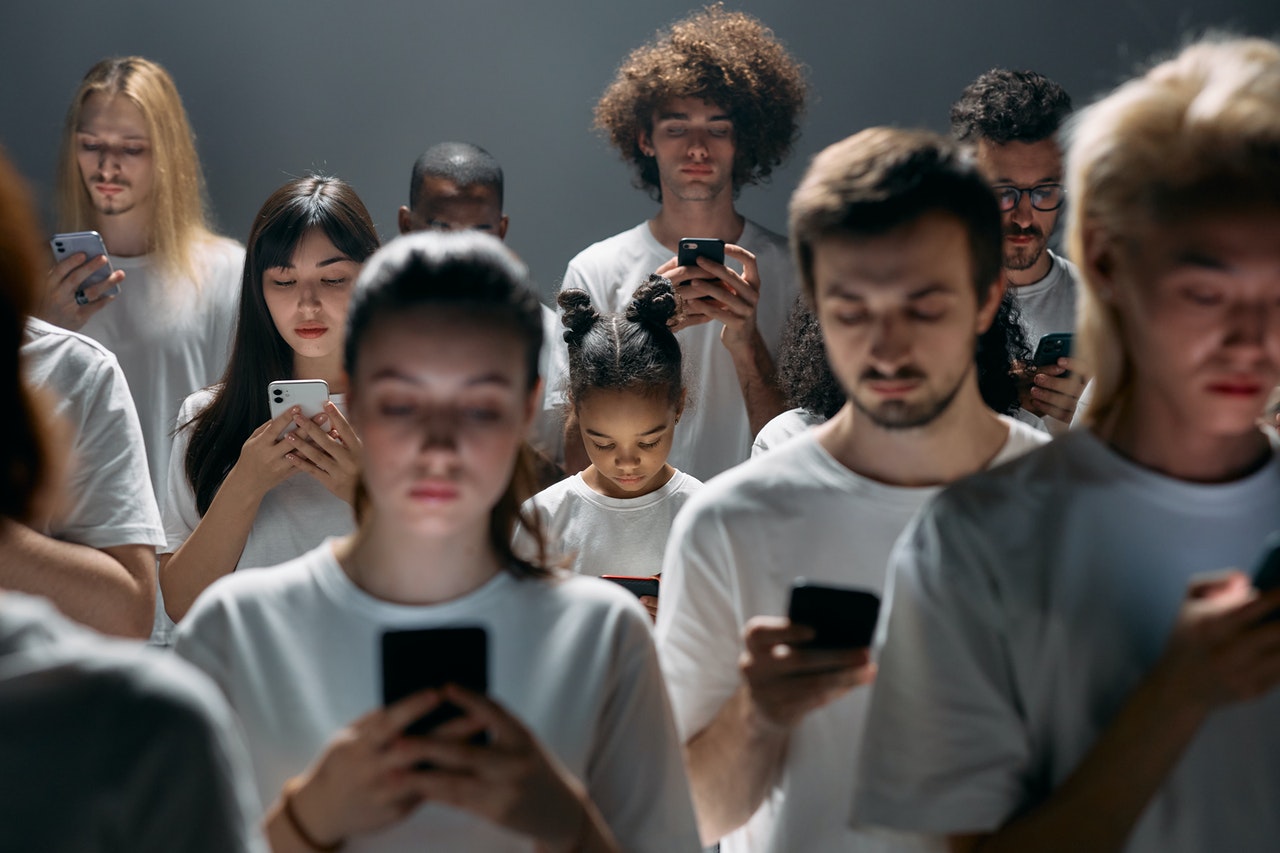For those interested in understanding how social interactions can shape behavior and mental processes, this article dives deep into some of the most influential social psychology experiments in history. Covering everything from the perpetrator-victim dynamic prevalent in Stanley Milgram’s infamous obedience experiment to the false consensus effect just a few years later, these social psychology experiments provide invaluable insights into the human psyche.
Through carefully conducted studies such as Lee Ross’ Diffusion of Responsibility Experiment and Edward Thorndike’s Halo Effect Experiment, as well as famous experiments such as Albert Bandura’s Bobo Doll Experiment, we are able to better comprehend why people act the way they do in certain situations. Come explore these incredible, influential experiments that have left their mark on social psychology and the world!
To learn more about what is social psychology check out our article.
The Stanford Prison Experiment, 1971
1.1. Overview
The Stanford Prison Experiment was a widely known and controversial social psychology experiment conducted in 1971 at Stanford University by Professor Philip Zimbardo to investigate how ordinary, healthy people would react to being made prisoners or prison guards. It has since become a classic social psychology experiment and is still studied today. However, the experiment has come under considerable criticism in recent years due to ethical issues.
1.2. Results
Twenty-four male college students were recruited for the experiment, which involved them playing the role of either prisoner or guard. Each group was then allotted 8-hour shifts and treated as if they were in a real prison situation. The prisoners were kept in the makeshift prison set up in the basement of the Psychology Department, where the guards were responsible for ensuring the inmates followed prison regulations. The participants were screened to guarantee they had no mental or physical problems that may have influenced their behavior.
The experiment concluded that it is possible to change the behavior of individuals when placed in groups, even when they are not aware they are being observed. The study showed how quickly people will conform to expected social roles and how easily ‘ordinary’ people can be transformed from ‘good’ to ‘evil.’ Both the prisoners and guards revealed stereotypical characteristics associated with correctional officers; the prisoners became emotionally unstable and submissive, whilst the guards became hostile and authoritative.
1.3. Criticisms
Philip Zimbardo’s experiment, the Stanford Prison Experiment, is like a dark mirror reflecting our society’s innermost fears. In 1971, Zimbardo conducted an experiment in which college students were randomly assigned to be either prisoners or guards in a simulated prison environment. The results of this study showed that people could quickly adapt to roles and lose their sense of morality when placed in certain situations.
The impact of the Stanford Prison Experiment has been far-reaching; it has been used as evidence for why prisons are so dangerous and how they can lead to psychological damage among inmates. It also serves as a reminder that power dynamics between individuals can have serious consequences if not monitored closely.
Critics have argued that the ethical practices employed by Zimbardo during his experiment were questionable at best, with some participants experiencing extreme distress due to their role-playing experience. Despite these criticisms, many believe that the experiment still provides valuable insight into human behavior and psychology today. Personifying its lessons, we could say that the Stanford Prison Experiment speaks volumes about how easily our moral compass can become distorted when faced with authority figures or oppressive environments.
The Asch Conformity Experiment, 1951
2.1. Overview
The Asch Conformity Experiment, also known as the “Asch Line Study,” was a series of experiments conducted by psychologist Solomon Asch in 1951 to test how people tend to conform to social pressures. The study was composed of two groups: one consisting of actual participants (the control group) and the other including actors (the confederates).
During the experiment, the participants were asked to view a line on one board and then match it to one of three lines on another board with their own judgment. Initially, the group was given correct answers; however, after a few attempts, the actors began to give wrong answers intentionally to observe how the participant would respond.
2.2. Results
The results showed that 75% of the participants conformed to the incorrect majority opinion given by the confederate group—even when it obviously contradicted their own senses. In addition, the control group with only real subjects produced a much lower rate of conformity, with less than 1% ever selecting the incorrect answer. This demonstrated that it was not the difficulty of the task but rather the presence of an influential social group that caused the majority of participants to deny their own thoughts in order to fit in with the others.
2.3. Criticisms
Critics have argued that the experiment was not diverse enough since it mainly used college-aged men as its sample population. Additionally, because the experiment did not include females, it has been suggested that the results of the cave experiment cannot be generalized to all genders.
Furthermore, critics have argued that the experimental design lacked a true measure of real-life social pressure since the actors and real participants knew the situation was artificial. Despite these criticisms, the Asch experiment remains one of the most important social psychology studies in history, and its core message about the power of conformity to influence opinions and behavior continues to be studied and discussed today.
We tackled the topic of conformity in our article about social influence.
The Bobo Doll Experiment, 1961
3.1. Overview
The Bobo Doll experiment was a series of experiments conducted by psychologist Albert Bandura between 1961 and 1963 at Stanford University, aimed at studying the extent to which human behavior is based on social imitation rather than inherited genetic factors.
Three groups of 24 participants each, aged from 3 to 6 years old, were chosen for the experiment – a control group (with no interaction with any adults), an aggressive group (observing an adult behaving aggressively towards the doll), and a passive group (observing a more passive adult playing with the doll). The results of the studies were a strong indication that children were strongly influenced by watching other people’s behavior and imitated it afterward in their own behavior.
3.2. Results
The study found that the children in the aggressive and passive groups were significantly more likely to behave aggressively towards the bobo doll than those in the control group, even though the latter had not been exposed to any type of model behavior. When it came to gender differences, boys showed more aggressive behavior when exposed to the aggressive behavior of male models, while girls showed similar findings, albeit less drastic.
Moreover, the study also contained a memory test during which wrong answers were punished with electric shocks; here, it appeared as if the individual completing the test was affected by the electric shocks, suggesting that authority figures can greatly influence behavior, even if not intentionally. Finally, the study also showed that when urged to continue with the experience even after protests from the individual receiving electric shocks, they complied with the requests, highlighting the power of authority within social situations.
3.3. Criticisms
Although the experiment raised widely accepted as evidence for the hypothesis that individuals learn behavior by observing others, the Bobo Doll experiment has been criticized in recent years. One key point of criticism is that Bandura’s research neglected to look at positive modeling – for example, modeling of altruism or helpful behavior, instead focusing solely on aggression.
Additionally, some have argued that, due to its relatively small sample size and laboratory-based approach, the study failed to take into account real-life influences, such as environmental variables, which would have provided additional context. Despite these criticisms, the Bobo Doll experiment remains one of the most famous studies in psychology, providing significant evidence for the importance of social learning theory in understanding human behavior.
The Milgram Experiment, 1963
4.1. Overview
The Milgram Experiment was a famous social psychology experiment and experiment conducted by Stanley Milgram in the 1960s. Its aim was to test people’s obedience to authority. The study examined how far people would go when an authority figure instructed them to perform acts that conflicted with their morals.
Specifically, it sought to find out if non-Nazi populations, such as those from the United States, would follow orders to harm other persons. One of the motivations for this investigation was the results of World War II, during which Nazi leader Adolf Eichmann was able to use “I was only following orders” as a legal defense at the Nuremberg trials.
4.2. Results
The experiment was conducted at Yale University in 1961 and included unsuspecting participants who were told that the study was about memory. Participants believed they were participating in a study where they would be required to act as teachers while an unsuspecting confederate (learned) was on the other side of the wall. Their task was to ask questions to the learner, and if they received a wrong answer, press a button administering shock, ranging from 15 volts to 450 volts.
The results showed that despite protests and cries from the learner, 63% of the participants continued pressing the switch. Milgram’s experiment revealed that human beings are conditioned to obey authority figures, even when going against their natural moral code.
4.3. Criticisms
Despite its significance, the Milgram Experiment has been heavily criticized over the years, and some have argued that the study violated ethical standards. The argument is that causing psychological and emotional distress to unwitting volunteers is wrong. Other critics have argued that the role reversals or changes in lab settings would yield different outcomes and should have been considered.
In response to these criticisms, some scientists have suggested controversial experiments by reducing the voltage administered to the learner or conducting newer versions of the experiment in naturalistic settings. In addition, the way modern studies measure obedience is greatly different – contemporary research focuses on motives and reactions participants have after the experiment. These proposed changes would enable researchers to look into extraneous factors influencing obedience versus harm caused to participants.

The Halo Effect Experiment, 1977
5.1. Overview
The halo effect is commonly defined as the phenomenon in which a positive evaluation of one trait extends to an overall perception of an individual. This cognitive bias has been observed by social psychologists for over a century, beginning with psychologist Edward Thorndike’s studies regarding commanding officers in the military.
The halo effect is also known as the “what is beautiful is good” principle or the “physical attractiveness stereotype.” This phenomenon has had a lasting impact on our evaluation and judgment of others. Additionally, the term “halo effect” was named after its likeness to that of the halo painted above the heads of saints and holy figures in religious art, generally regarded as symbols of moral goodness.
To investigate this phenomenon further, Nisbett and Wilson conducted an experiment in 1977 at the University of Michigan. As research participants, they recruited college students who were asked to watch a pre-recorded psychology instructor tape with two different attitudes—one likable and another unlikable. After watching the videotapes, they filled in a questionnaire that asked them to rate the lecturer’s physical appearance, mannerisms, and accent on an 8-point scale ranging from “like extremely” to “dislike extremely.”
Nisbett and Wilson’s study showed that despite the lecturers having the same mannerisms and accents, the respondents rated the lecturer more favorably if their attitude projected a likable demeanor. Moreover, Nisbett and Wilson discovered that people are unaware when the halo effect phenomenon occurs; they inferred that the respondents relied on their initial impression of the lecturer without being aware that it influenced their subsequent assessment. In total, 278 college students participated in the study.
5.2. Results
The results of this study showed that the ratings of the lecturer responded differently depending on his behavior—those who saw him adopt a likable demeanor in the video gave him higher ratings than those who saw him act in an unlikable manner. Furthermore, those who rated the lecturer highly were more likely to believe that he was intelligent, hardworking, kind, and humorous. This suggests that the halo effect can lead people to make inaccurate assumptions about someone based solely on their appearance or behavior.
Moreover, an updated study on the halo effect also suggests that a negative assessment of certain traits can similarly affect subsequent perceptions. For instance, if someone didn’t like the instructor’s physical appearance, they are more likely to rate him as unintelligent and lazy. This provides evidence that negative feelings about one characteristic can extend to an individual’s other features.
5.3. Criticisms
Despite its analytical contributions to the field, some scholars have questioned Nisbett and Wilson’s use of college students as the research participants in the study due to their limited exposure to the concept at hand. Additionally, since the focus of this experiment utilized only pre-recorded videos, there is also criticism of the limitation in the accuracy of facial expressions and vocal intonations. However, this study does provide evidence that people may rely on initial impressions when making assessments, resulting in cognitive bias and inaccurate judgments.
The False Consensus Effect Experiment, 1974
6.1. Overview
The False Consensus Effect Experiment was conducted in 1974 by Professor Lee Ross, then at Stanford University. The experiment focused on how people can form a “false consensus” about the beliefs and preferences of others. Specifically, it asked participants to read situations with two alternative responses and predict which one other people would choose. In the study, most subjects overestimated the likelihood that others would do the same thing as them, even when the situation was hypothetical and there was no real data to indicate what choice the majority of people might make. Furthermore, researchers found that the anticipation of a false consensus could lead people to display negative predictions about the personalities of those who did not share their choice.
6.2. Results
The results of Lee Ross’s experiment demonstrated the false consensus bias – the tendency to overestimate the extent to which others agree with one’s own beliefs and behaviors. He and his colleagues also conducted experiments in the late 1970s to demonstrate how this bias operates in estimating other people’s behaviors and causes. For example, participants chose a resolution to an imagined conflict, then estimated how many others would choose the same.
In another experiment, students were asked to carry a sign that read “eat at joe’s” to measure how many other people agreed with the sign. Those who agreed believed the majority of people would also agree; those who refused believed the majority would refuse. This experiment showed the false consensus effect – we tend to believe the majority of people agree with us and act the same way.

6.3. Criticisms
The false consensus effect is like a mirage in the desert, appearing to be something it’s not. It occurs when people overestimate how much other people agree with them. This bias can lead to an inaccurate perception of reality and cause individuals to make decisions based on false assumptions. The false consensus effect is most likely to occur when someone has strong beliefs or opinions about a particular topic and assumes that others share their views.
The Chameleon Effect Experiment, 1990
7.1. Overview
The Chameleon Effect is a phenomenon of unintentional mirroring, which was observed and studied for the first time in 1939 at the University of Iowa by Dr. Wendell Johnson. It involves someone mimicking another’s body posture, hand gestures, or even speaking accents without realizing it. In the 1990s, researchers Tanya Chartrand and John Bargh conducted follow-up experiments to further study this effect, which would be known as the “Chameleon Effect.”
7.2. Results
During their experiment, Chartrand and Bargh secretly mimicked the actions and behaviors of some test subjects during their conversations and monitored the responses. Those that were mimicked found the researchers more likable compared to those not mimicked. The results point to how people often subconsciously respond to others even if they weren’t consciously aware of the imitating behavior.
7.3. Criticisms
Despite being a popular explanation for why people tend to mirror each other’s behavior, the Chameleon Effect has been criticized by some. These criticisms mostly come from the idea that the phenomenon could potentially involve manipulation as well as desensitizing people to be more vulnerable to conformity and impressions. Additionally, some suggest there may be other reasons why people might mirror each other other than the Chameleon Effect itself, such as insecurity or politeness.
The Diffusion of Responsibility Experiment, 1968
8.1. Overview
The diffusion of responsibility experiment, conducted in 1968 at Stanford University, is an iconic social psychology experiment. It is studied to understand the bystander effect, a phenomenon in which people are more reluctant to express helpfulness or give aid if other bystanders are present.
Stanley Milgram and John Darley conducted the experiment to analyze how the presence of others could influence helping behaviors in kids. The study was also connected to concepts from Lev Vygotsky’s theory referring to emotional role-taking and group cohesiveness when observing the behavior of other members in a particular situation.
In the study, 600 children between the ages of four to six were tested. Each child was presented with one marshmallow, and they were promised to receive a second one if it still remained on the table after 15 minutes.
The results showed that only one-third of the children had delayed their gratification long enough to obtain the second marshmallow. Follow-up studies demonstrated that those children who managed to delay gratification and obtain the second marshmallow had higher SAT scores and were found to be more competent than their peers who could not wait and ate the marshmallow immediately.
8.2. Results
The results of the diffusion of responsibility experiment in 1968 proved to be true to an extent. Its findings added significantly to defining the bystander effect and the effects of the presence of other people, which may inhibit helpers’ reactions to those in need. The research showed that the number of bystanders could have a profound effect on one’s decision on whether to act or to remain inactive. This study takes into account the psychological phenomenon known as diffusion of responsibility which partially explains this inhibition of helping behavior.
8.3. Criticisms
Although the diffusion of responsibility experiment has contributed greatly to our understanding of the bystander effect, there is some criticism surrounding the validity and applicability of the experiment change in the setting in which it was conducted. Namely, there is some concern around the age of the participants, as well as the amount of time provided for the test, both of which may have had an influence on the outcome. In addition, since the experiment was conducted in 1972, there have been numerous changes to society and culture that may not have been taken into account by the authors at the time, leaving some questions as to its usefulness in current situations.

The Cognitive Dissonance Experiment, 1957
Leon Festinger’s Cognitive Dissonance Experiment of 1957 addresses the mental discomfort experienced when trying to hold two conflicting beliefs. The experiment sought to identify how this dissonance is resolved by people and to gain further insight into our thoughts and behaviors.
Stanley Schachter and Jerome E. Singer conducted the experiment with the intention of testing the cognitive theory of emotional arousal. They injected participants with epinephrine, a hormone that can produce side effects– both physical and psychological – such as increased heart rate, faster breathing, and an elevation in blood pressure.
The study featured a confederate who acted either in one of two ways: they were either pleasant or unpleasant. As knowledge of the injection’s side effects became aware to the participants, their emotions shifted accordingly. This revealed that dissonance leads to emotional arousal in individuals, leading them to act in agreement with emotion-triggering cognition.
In light of its results, critics have since made a note of the implausibility of Schachter and Singer’s study, claiming that it does little to address the complexities of the cognitive dissonance theory. By comparison, Leon Festinger’s cognitive dissonance experiment assumes that everyone holds many different cognitions about the world. It then examines what happens when those cognitions do not fit together adequately. Discrepancies are accepted if an event or occurrence makes sense; if not, these discrepancies lead to a state of tension or dissonance.
Interested readers may refer to festive ger’s 1959 article, “Cognitive Dissonance,” for a more in-depth exploration of the experiment’s results and implications. The study remains a classic social psychology experiment, illustrating how we reconcile the conflicts created by existing contradictory beliefs.
Summary
The 10 most influential social psychology experiments in history can all be summarized by their contribution to the development of our understanding of human behavior. From Milgram’s famous study revealing our willingness to obey authority figures, to Bandura’s Bobo Doll Experiment establishing the power of aggression and imitation, to Nisbett and Wilson’s Halo Effect Experiment controlling biases towards physical attractiveness, these studies provide insights into the power of group dynamics, social pressures, and cognitive bias that continue to inform and impact modern society today.
Learning about these classic social psychology experiments also encourages us to question our assumptions, explore alternative perspectives, and strive for greater understanding and acceptance. Whether by examining the limitations of data collection or the ethical implications of research methods, these landmark studies have built our knowledge base and served as a reminder of the importance of respect and empathy.
In conclusion, the 10 most influential social psychology experiments listed reflect an inspiring effort to better understand human behavior and engage in much-needed conversations around this fascinating field.
Frequently Asked Questions
What were the initial experiments in social psychology?
Norman Triplett’s 1898 experiment is credited with being the first social psychology experiment. He examined the effects of competition on a simple task – winding hempen string – and found that people performed better when in the presence of others than when alone. His findings ushered in an exciting new field of research into how people are both influenced by, and affect, the social world around them.
Why are experiments are used in social psychology?
Experiments provide valuable insight into human behavior and allow for cause and effect relationships to be better understood. They are an essential tool conducting research in social psychology, allowing the researcher to observe how individuals respond in different situational contexts. Experimentation allows us to answer important questions about social behavior, making it an invaluable research method.
What are social psychology topics?
Social psychology explores the fascinating ways that people interact with each other, from understanding why prejudicial behavior occurs to analyzing why some people have a greater degree of influence over human behaviors than others. Social psychology has played a major role in helping us understand human behavior. It has made invaluable contributions through its research on various topics like prejudice and discrimination, gender, culture, social influence, interpersonal relations, group behavior, aggression etc.
What is an example of a social experiment?
An example of a social experiment is Stanley Milgram’s obedience experiment conducted in 1963 which tested human subjects’ willingness to obey orders regardless of the outcomes. This controversial experiment was conducted in order to understand how far people would go to follow orders from authority figures, even if it meant inflicting pain on another person.
Ahhh! What an article that was. Still hungry for some knowledge? See our recommended posts:
How To Use Psychology in Marketing – A Guide
Loss Aversion Marketing Strategies to Increase Sales
What was the social experiment of the 60s?
The Social Experiment of the 1960s was the Milgram experiment, conducted by Yale University psychologist Stanley Milgram. It tested participants’ willingness to obey authority when asked to do something that conflicted with their own moral values. The experiment yielded powerful insights into human behavior and the power of authority, making it one of the most influential experiments of its time.
